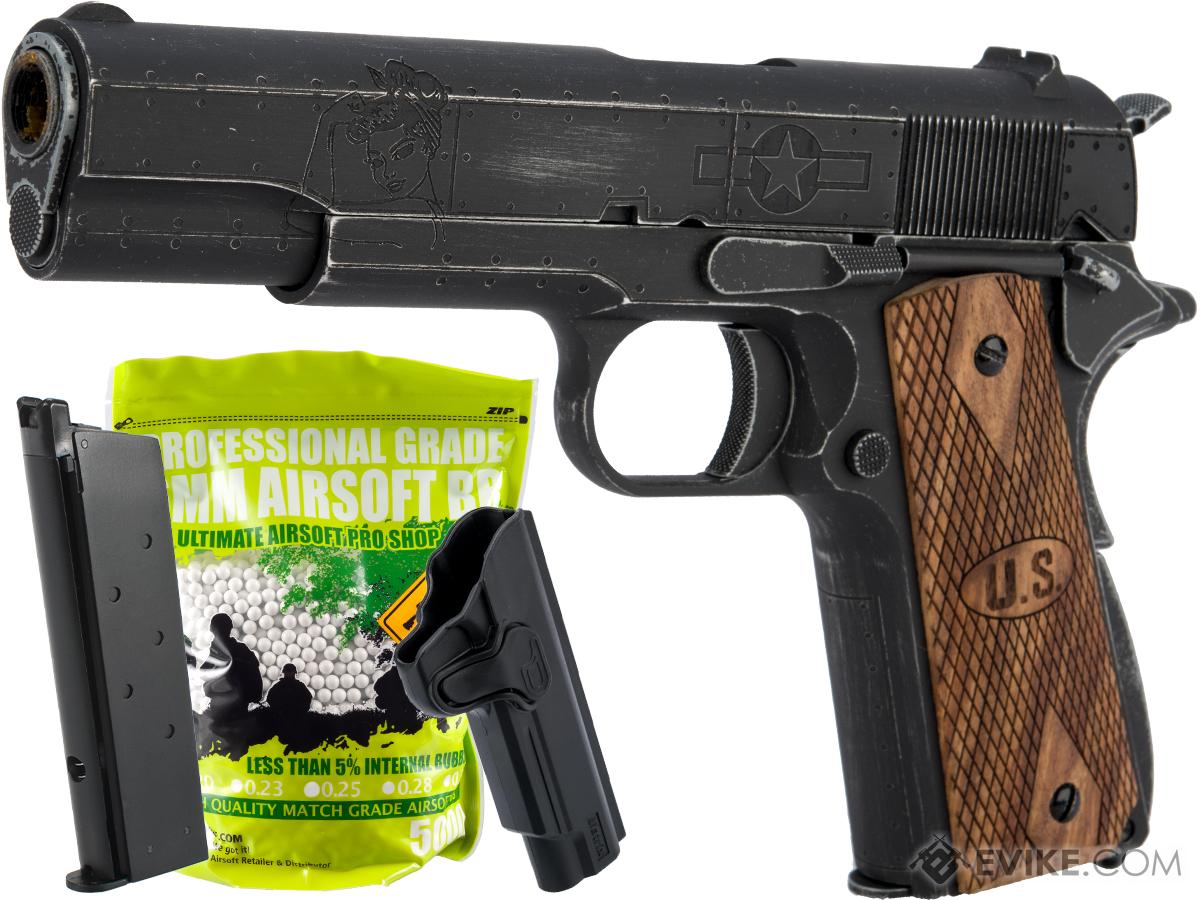

There are NO EXCEPTIONS TO THIS!Ĭustomer MUST contact us within 3 days of receipt of the item (we do get specific dates packages are delivered). If you wish to return an item you’ve purchased, you must follow all directions listed below. Don’t miss a bargain on these hard to find parts! What you see in the photos is what will be shipped, no more, no less, so please check carefully to ensure that the parts you need is correct. Please do not ask us to take out one part for sale if there is more than one part included, or to take any measurements not already in photographs, this takes time and money. All firearms parts should be inspected and installed by a competent gunsmith. These parts are used and will show signs of use. It is a nice-looking part and is ready for a new home some parts may show some blemishes, scratches & handling marks here and there & require cleaning. World War II M1 carbine and M1911 pistol.You are purchasing a Auto Ordnance 1911 A1 US Army 45 ACP Trigger Assembly, Trigger Bar Lever. Kahr Auto-Ordnance also manufactures replicas of the U.S.

Variations include the "Chicago Typewriter" 1927A-1 which resembles the Model 1921AC of the gangster era the 1927A-1 "Commando" which resembles the early World War II Model 1928A1 Thompson with the Cutts Compensator the TM1 which resembles the later World War II M1 Thompson with the side-mounted bolt handle and a "Thompson pistol" that essentially is an M1928 without provision for mounting a buttstock. Dimensional changes prevent installation of full-auto bolts and fire control groups in the semi-auto frames or receivers. Although they appear identical to their selective-fire (full-auto) predecessors, unlike those the new production Thompsons fire from a closed bolt rather than the open bolt of the original Thompson design.

Kahr continues to make semi-automatic-only "Thompson Carbines" in. Numrich Arms continued as Gun Parts Corporation. 22 LR caliber.Īuto-Ordnance Corporation was bought out in 1999 by Saelio Enterprises Inc., parent company of Kahr Arms.
AUTO ORDNANCE 1911 PARTS FULL
In 1974, the Numrich incarnation of Auto-Ordnance made a few full auto Thompson submachine guns and numerous semi-automatic only replicas of the Thompson gun for the collectors' market, including. Numrich also supplied parts for Thompson guns to law enforcement and gun collectors. Numrich Arms Auto-Ordnance assembled limited numbers of Thompson submachine guns primarily for law enforcement from existing receivers found in the crates purchased in 1951, including M1928A1 and M1A1 models. Later, it became popular for use in urban environments due to its short barrel making it easier to bring to target in a confined space than the M1 Garand, and in jungle warfare due to its volume of fire and stopping power.ĭuring the 1950s, the assets of the original Auto-Ordnance Company were acquired and operated by Numrich Arms Corporation (NAC, no relation to the original 1916 AOC). The Thompson M1A1 was typically issued to tankers and others affiliated with vehicles, due to the weapon's heavy weight and short effective range. Auto-Ordnance also made parts for other military firearms as a subcontractor for other manufacturers in World War II. Later during World War II, Auto-Ordnance established its own production plant in Bridgeport, Connecticut, and produced the M1928A1, M1 and M1A1 Thompsons to augment production by Savage Arms for the military. 30 carbine trials in the early 1940s but these were not adopted by the military. Prototypes Īuto-Ordnance produced different prototypes for military rifle trials in the 1920s and for the. A small run of M1928 and M1928A1 made by Savage Arms were stamped "TOMMY GUN". After the Thompson submachine gun received the nickname "Tommy Gun" in the popular press, Thompson went to the trademark office to protect the nickname. The initial production of the Model 1921 was by Colt. Thompson first showed the submachine gun design to the US government, but it became a gun for law enforcement before it was put to use in the military. The first short run production model was 1919, too late for use in World War I. The birth of the Thompson submachine gun took place when Thompson had the idea of a "trench sweeper" or "trench broom". 30-06 rifle cartridge but very effective with the. The engineers learned that the Blish lock design, which was a delayed blowback action, was ineffective with the. Thompson hired two design engineers Theodore H. In exchange for shares of the newly founded company Blish agreed to give Thompson his patent. In 1915 Thompson had found the Blish Lock patent of Commander John Blish, which was the operating principle of the first prototypes of the Thompson submachine gun and the Thompson Autorifle. Thompson in August 1916 with the backing of investor Thomas Ryan. Auto-Ordnance Corporation was created by John T.


 0 kommentar(er)
0 kommentar(er)
